Data Modernization + Observability = how to rebalance your use of the Splunk platform to enhance your digital resilience

In the ever-evolving digital ecosystem, where the pace of innovation is relentless, organizations face the dual challenge of managing escalating data volumes while simultaneously enhancing resilience and cost efficiency. Embracing modern data approaches presents a compelling solution, offering the promise of rebalancing the use of the Splunk Platform to enhance digital resilience. Let's delve into why modernizing data strategies is not just an option but a necessity in today's tech landscape and later in this blog we’ll explore the 3 strategies you can adopt to improve your Observability while rebalancing your use of the Splunk Platform.
Unveiling the Benefits of Data Modernization
Modern tech stacks are characterized by their voracious appetite for resources – more services to monitor and secure, more clouds, more data to analyze and correlate across hybrid architectures, more unpredictable points of failure, and of course a proliferation of tools to try to make everything “observable”. Amidst this complexity lies the opportunity for observability to emerge as a beacon of efficiency. Transitioning to observability will not only rebalance your use of the Splunk Platform while increasing digital resilience, but it will also enhance visibility, reduce your MTTD/MTTR, and facilitate collaboration between, Dev, Ops and Security.
Harnessing the Power of Data Classification
Traditionally associated with cloud-native environments, observability is now permeating legacy components of IT infrastructure as organizations recognize its value in gaining insights across diverse systems. However, amidst this expansion, it's essential to acknowledge that not all data warrants the high-speed, granular scrutiny provided by observability. As data ages, its significance and relevance may fluctuate, necessitating a differentiated approach to management. By classifying data based on its value, distinguishing between logs, metrics, and traces, organizations can ensure that critical insights are prioritized while conserving resources for less crucial data. This strategic organization of data enables organizations to derive maximum value from observability tools, regardless of their IT environment, and effectively balance the trade-offs between depth of insight, cost and resource utilization.  Near real-time data, predominantly metrics, demand specialized handling through observability use cases, leveraging streaming technologies for timely capture and analysis (you can learn more about why streaming is critical for Observability here). Conversely, data destined for compliance or long-term retention may find its home in a data lake for cost-effective storage. By aligning data management strategies with the value and usage patterns of data, organizations optimize resource allocation and streamline workflows.
Near real-time data, predominantly metrics, demand specialized handling through observability use cases, leveraging streaming technologies for timely capture and analysis (you can learn more about why streaming is critical for Observability here). Conversely, data destined for compliance or long-term retention may find its home in a data lake for cost-effective storage. By aligning data management strategies with the value and usage patterns of data, organizations optimize resource allocation and streamline workflows.
Architectures for Data Evolution: use the right tool for the job
In the pursuit of data modernization, organizations must carefully consider their architecture choices to maximize efficiency and minimize costs. Logs offer detailed insights into system behavior but can be inefficient and delay detection in highly ephemeral environments like containers and microservices when using Log Metricization (or when just pushing metrics in Splunk Cloud or Splunk Enterprise). Of course, if you don’t plan to use those cloud native technologies at scale, you might not need to keep reading. But if any of the following challenges sounds familiar, then…keep reading.
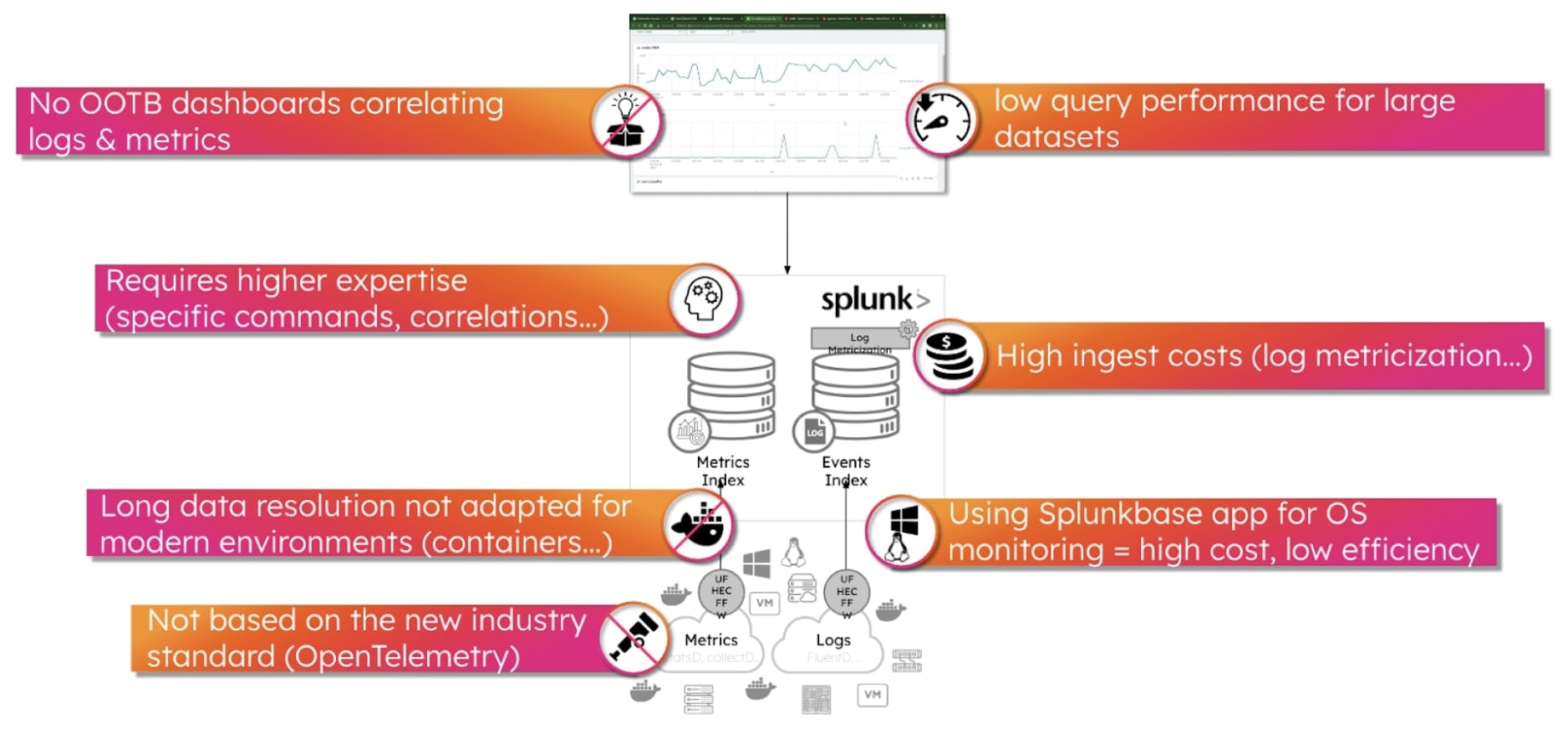
Let’s see the three alternatives to pushing metrics to Splunk cloud/Enterprise or using Log Metricization feature:
Option 1: Leveraging a New Third-Party Metrics Tools:
- While adding a dedicated metrics tool may seem appealing, it introduces additional complexity and resource overheads.
- Dual ingestion of metrics into both the new tool and Splunk may lead to inflated costs and inefficiencies.
- Metrics tools available in the market are often lacking a streaming approach and may struggle to keep pace with the rapid data generation of modern tech stacks (serverless, containers…).
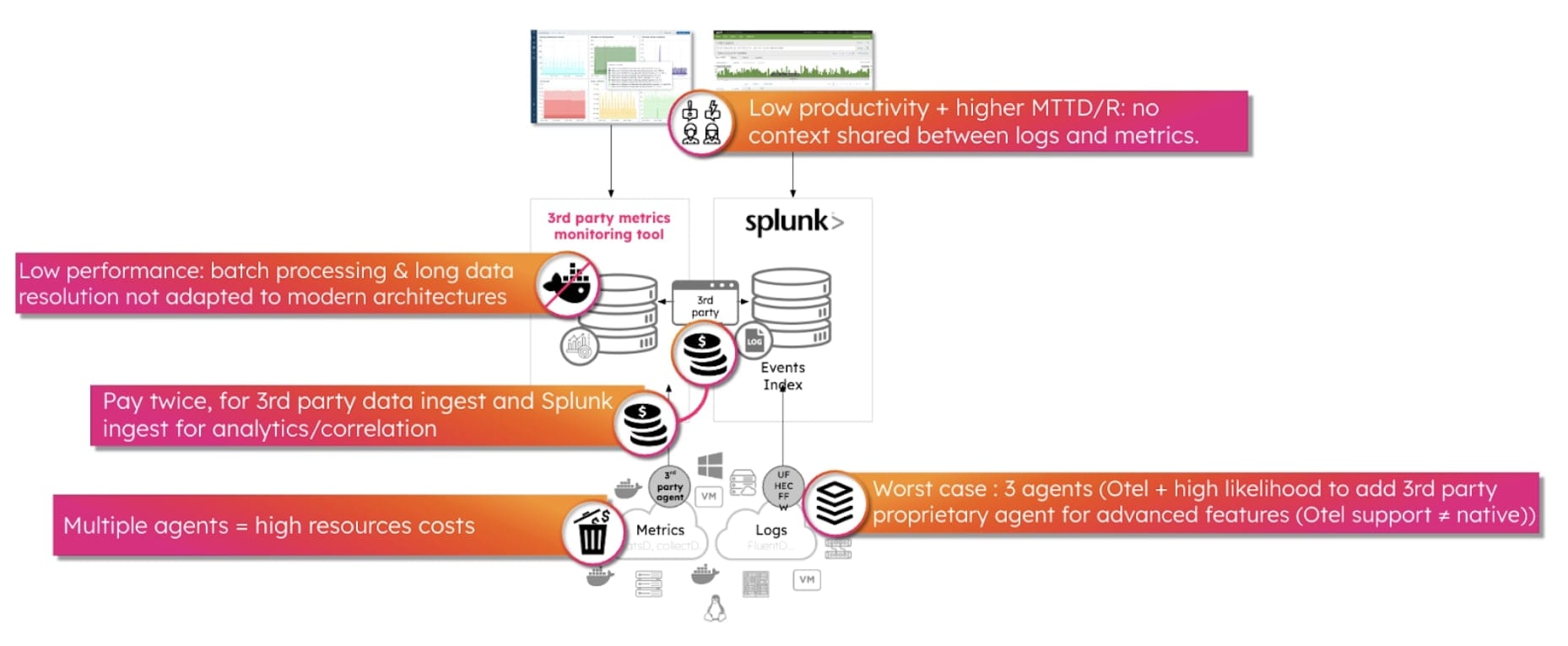
Option 2: Migrating to a New Observability Platform:
- Migrating to a new observability platform offers the promise of unified logs, metrics, and traces.
- However, current observability platforms often lack the agility and scalability required for modern tech stacks.
- Integration challenges and the need for multiple agents can compound complexity and increase costs.
- Siloed Security and Observability platforms prevent security, IT and engineering teams working together thereby reducing resilience
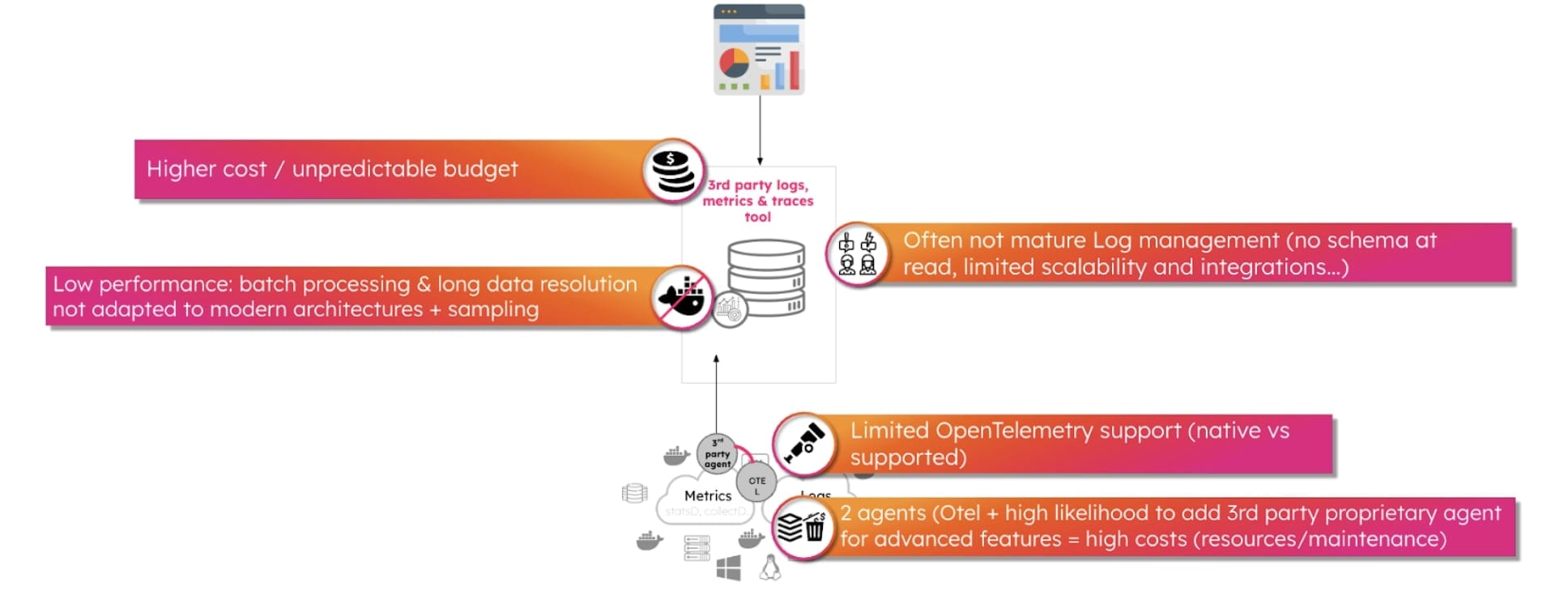
Option 3: Introducing Splunk Observability
- Adding Splunk Observability provides a seamless integration of metrics and traces while leveraging existing log data.
- Splunk's business models, such as host-based pricing, offer flexibility in rebalancing ingest costs.
- Unified data visualization and contextual analysis enhance efficiency and reduce mean time to detect and resolve issues.
- Splunk Observability's architecture, built on a streaming approach with 1-second resolution, ensures lightning-fast updates and comprehensive data capture.
- Leveraging Splunk's tiering capabilities further optimizes costs by storing non-essential data in cost-effective storage solutions like S3.
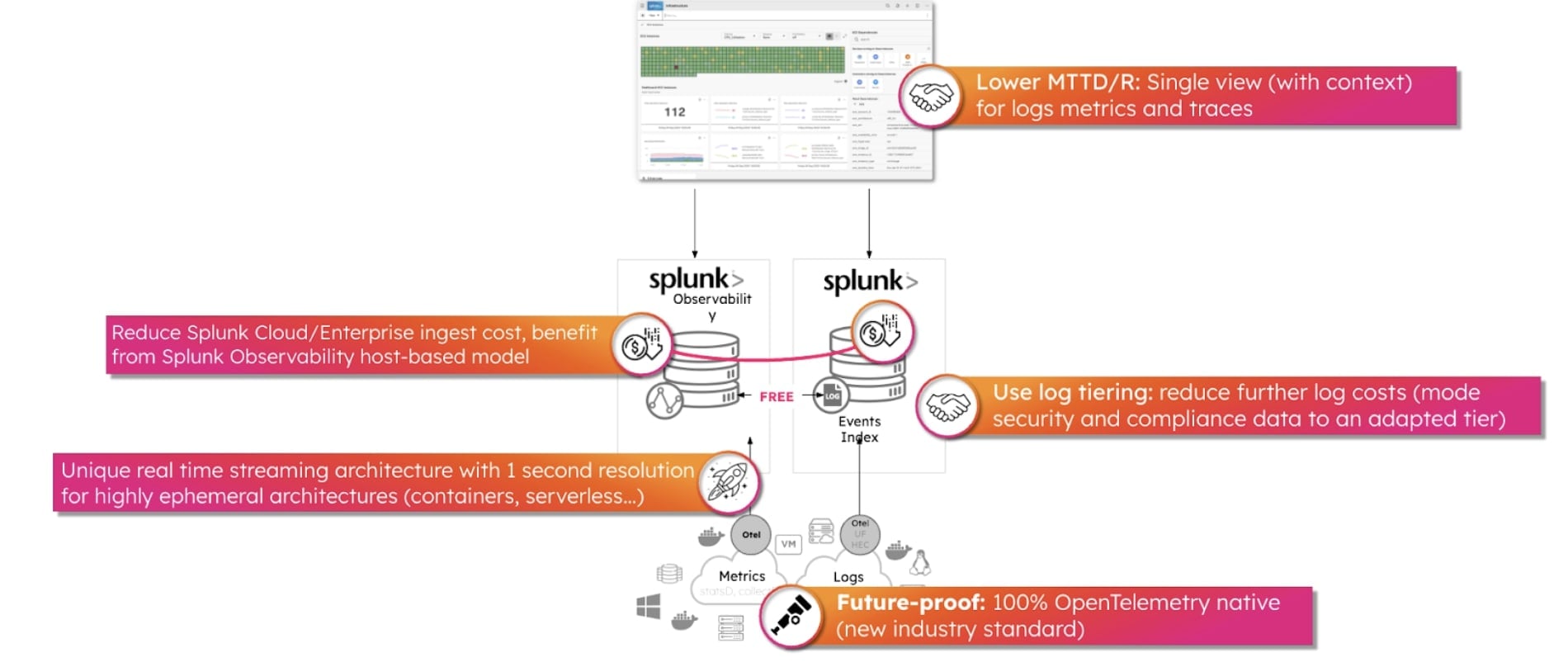
What does this look like? Here is a simple example when you have to deal with Kubernetes errors.
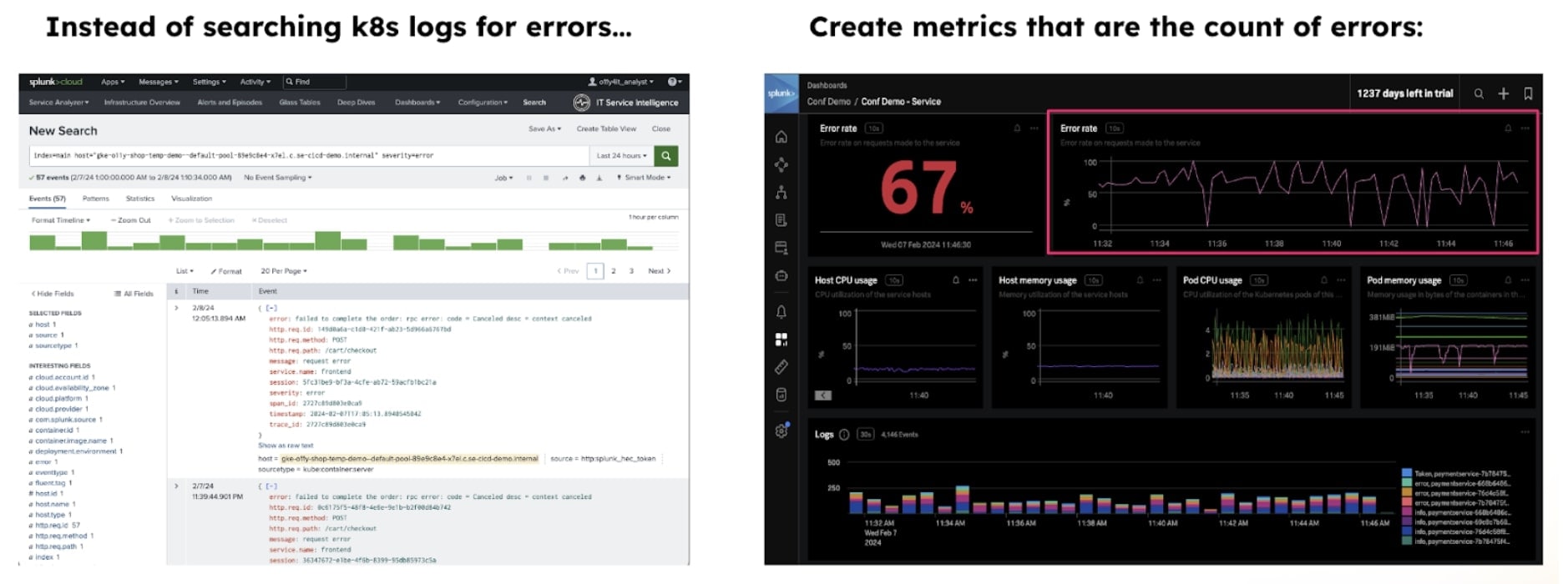
In conclusion, the journey towards data modernization is rife with opportunities to enhance efficiency, resilience, and cost-effectiveness by using the right tool for the job, with the right business model (host based vs Volume based). By embracing observability and strategic data classification, coupled with informed architecture choices, organizations can navigate the complexities of modern tech stacks with confidence, unlocking the full potential of their data assets.
Stay tuned for more insights on optimizing your data strategy for the future.
Related Articles
About Splunk
The world’s leading organizations rely on Splunk, a Cisco company, to continuously strengthen digital resilience with our unified security and observability platform, powered by industry-leading AI.
Our customers trust Splunk’s award-winning security and observability solutions to secure and improve the reliability of their complex digital environments, at any scale.




